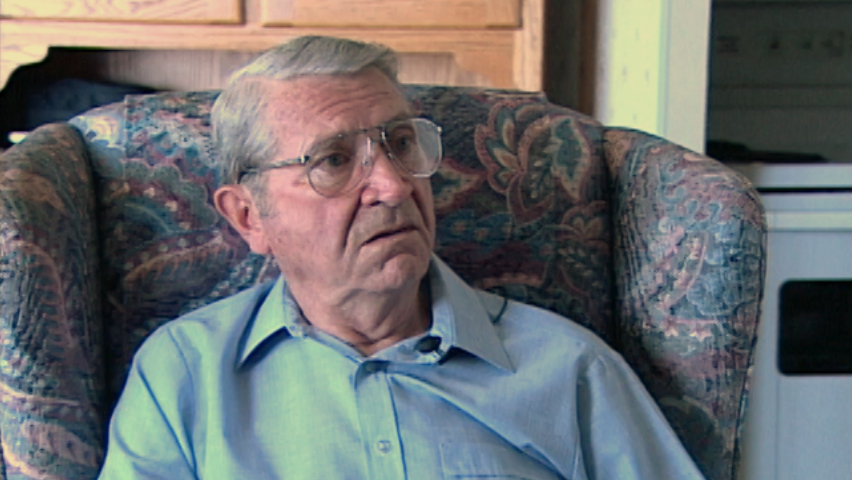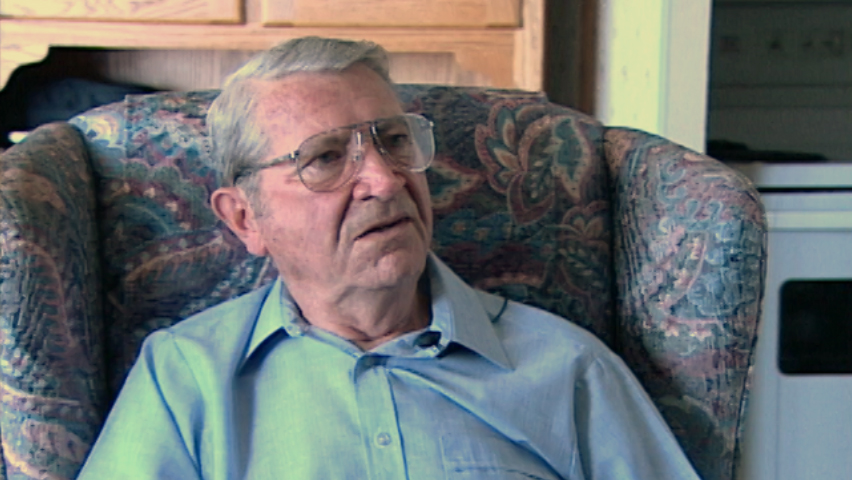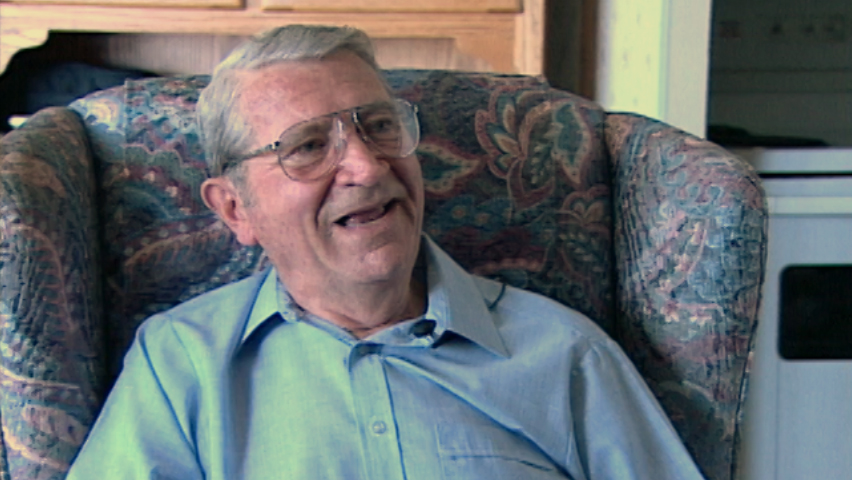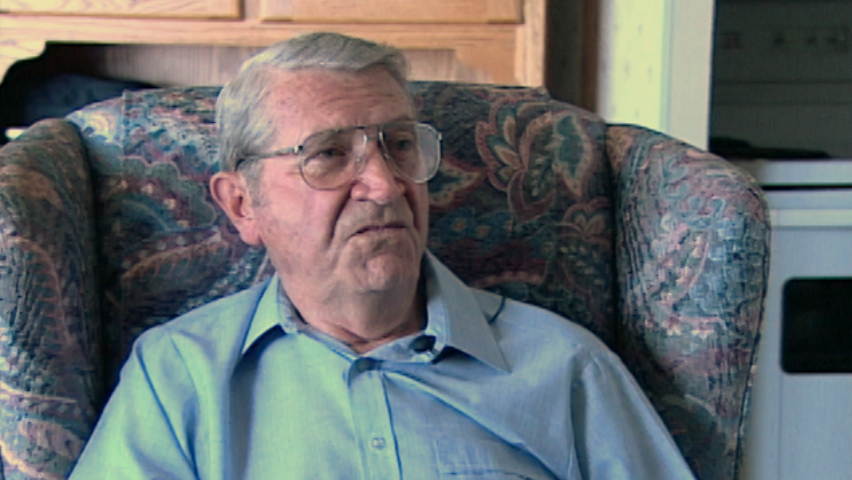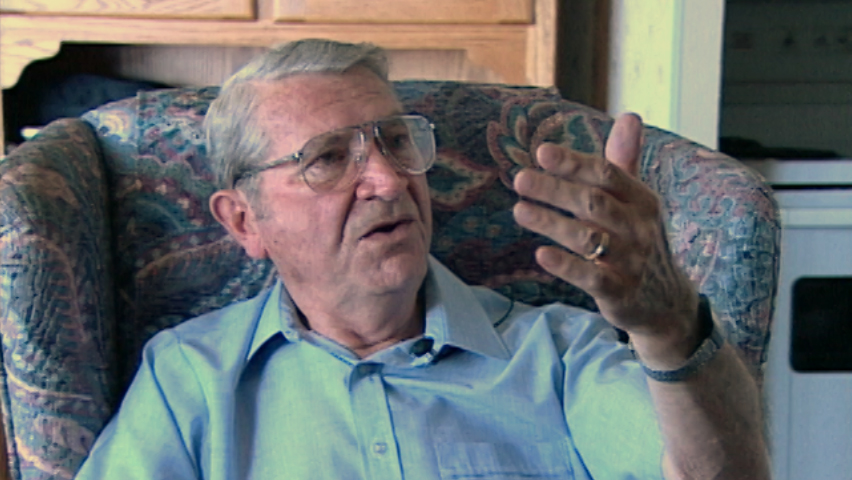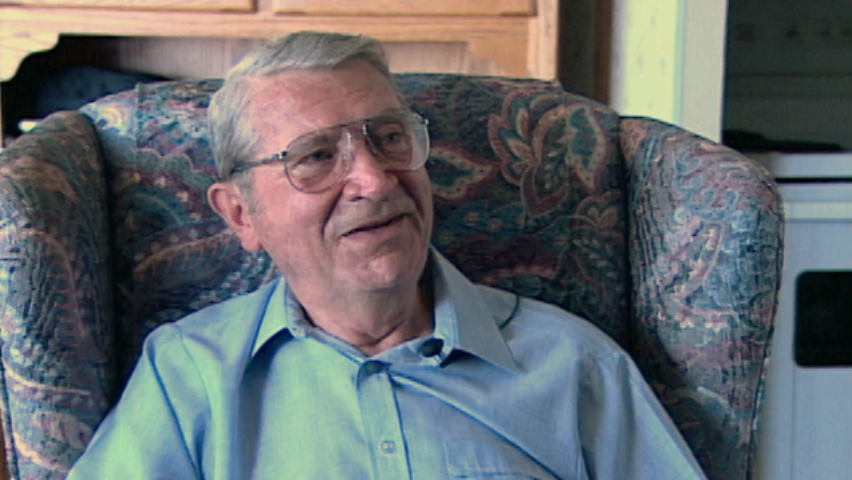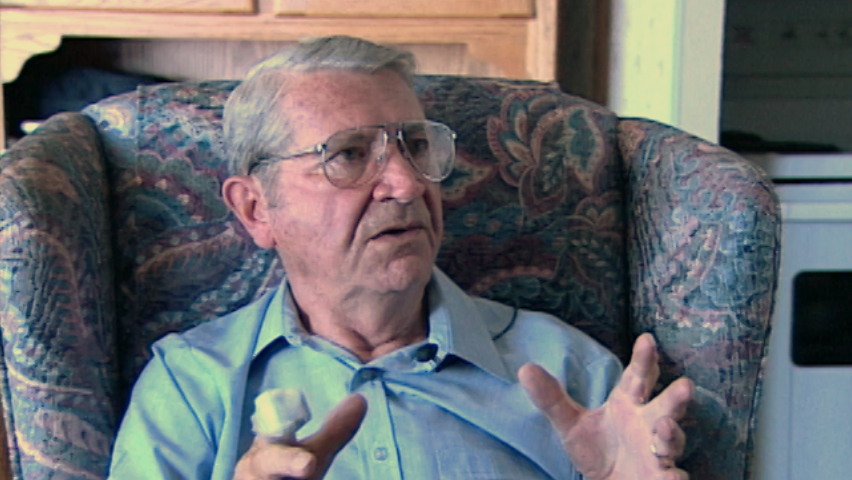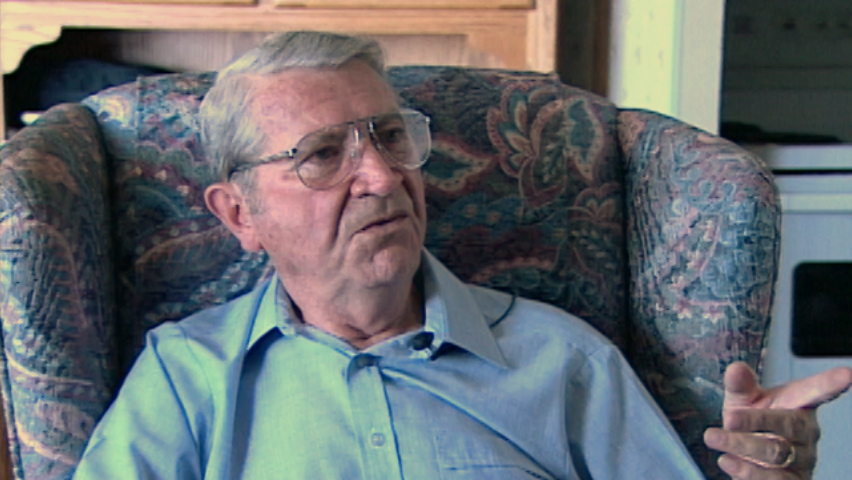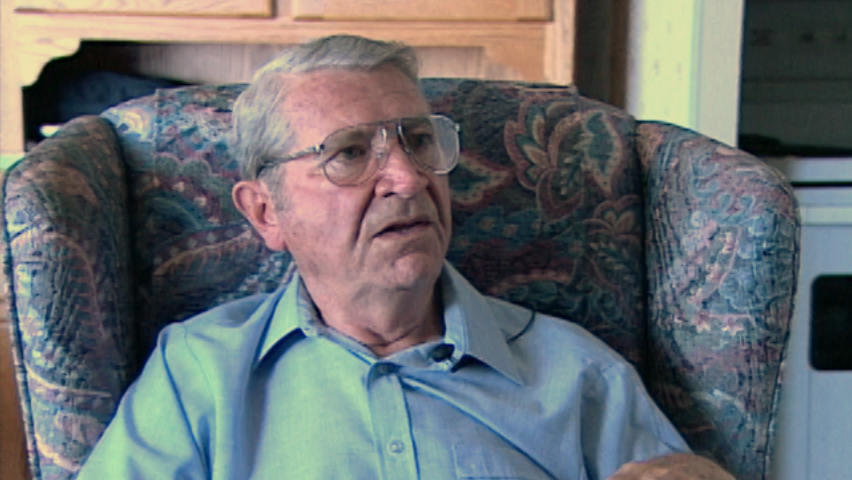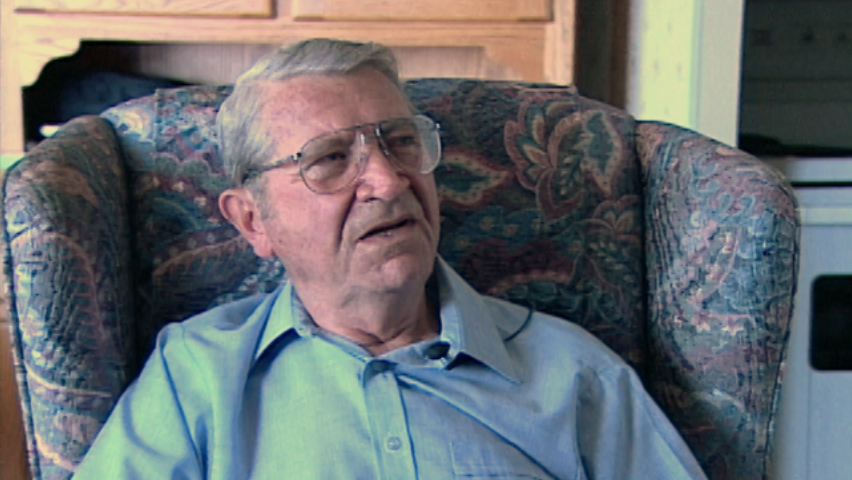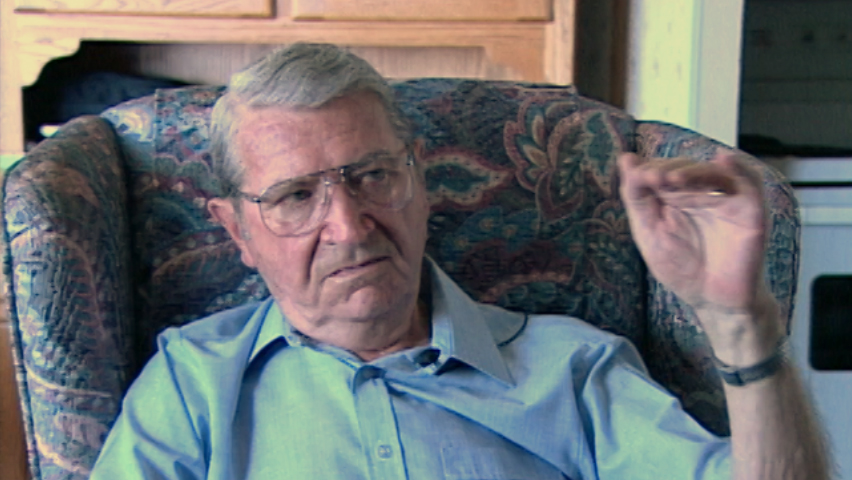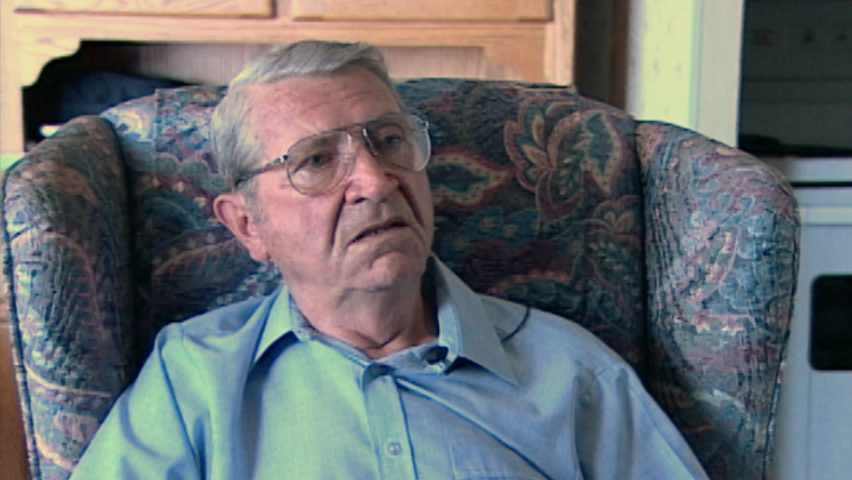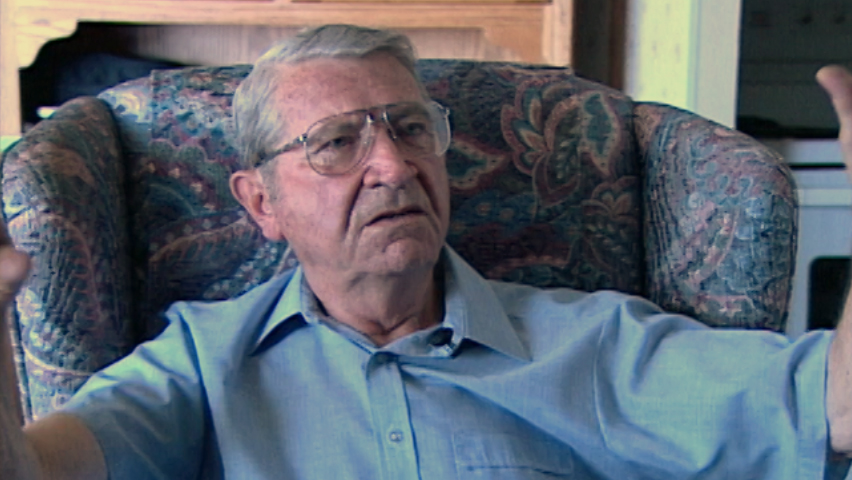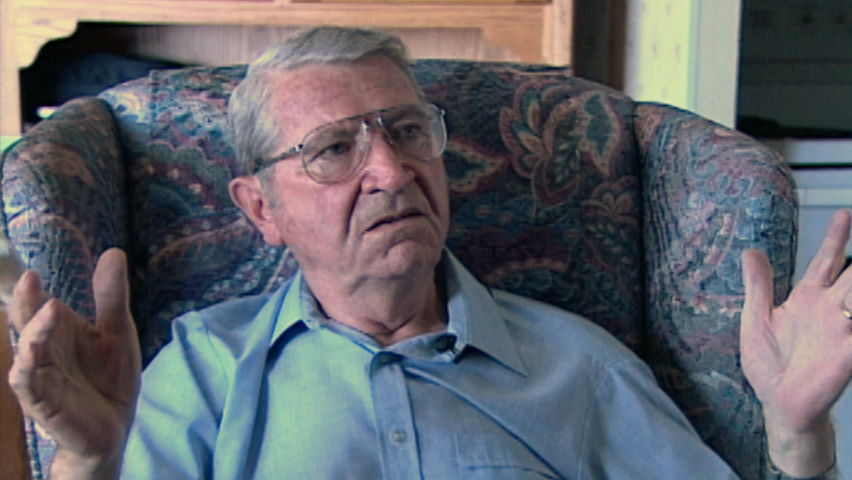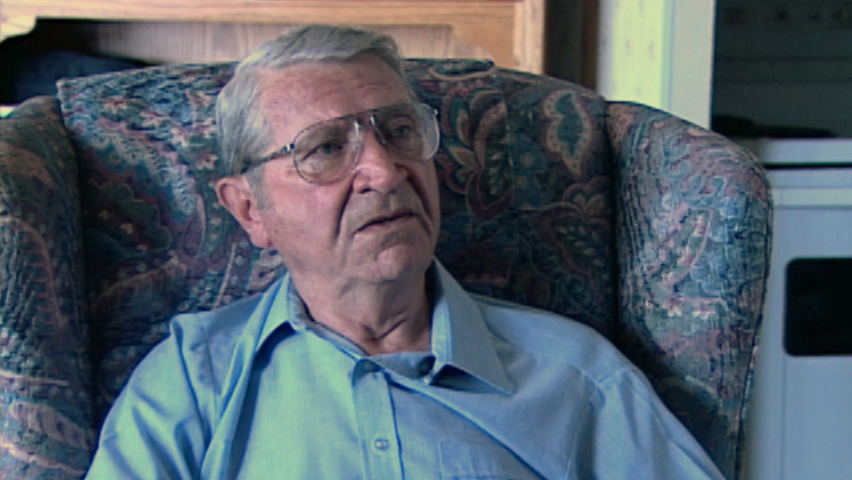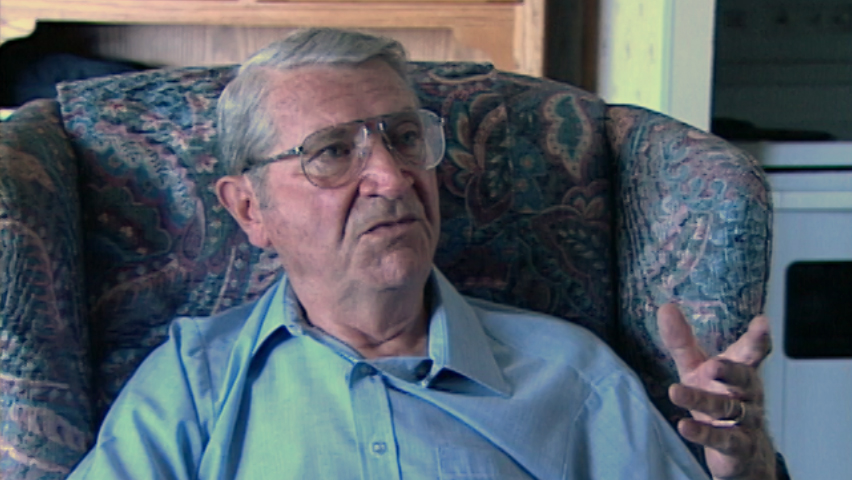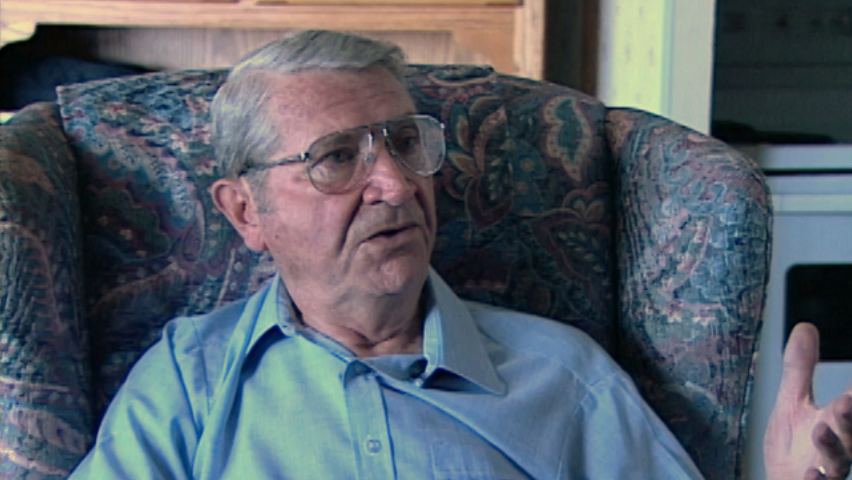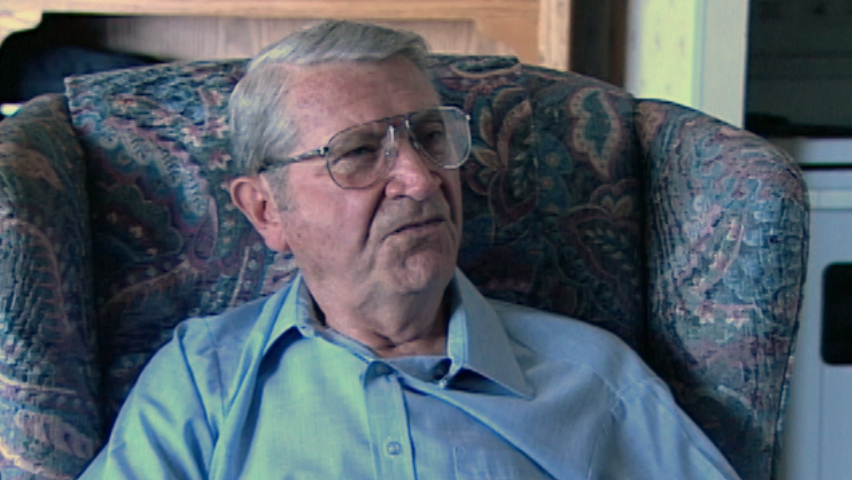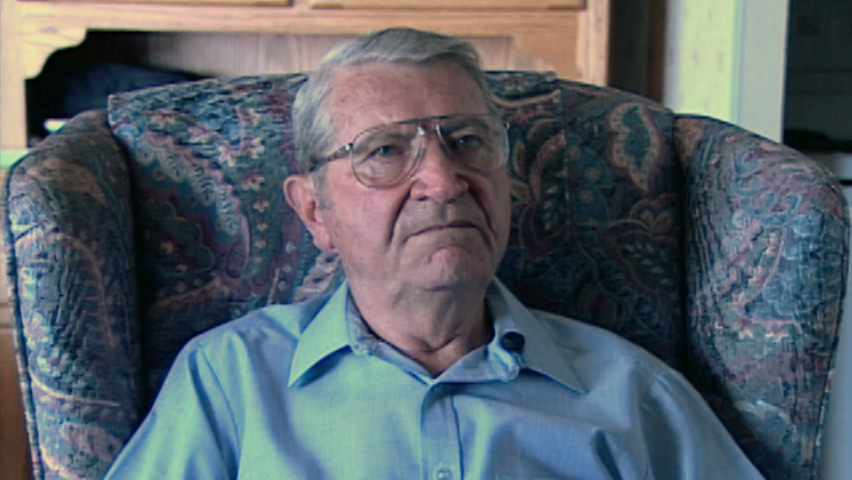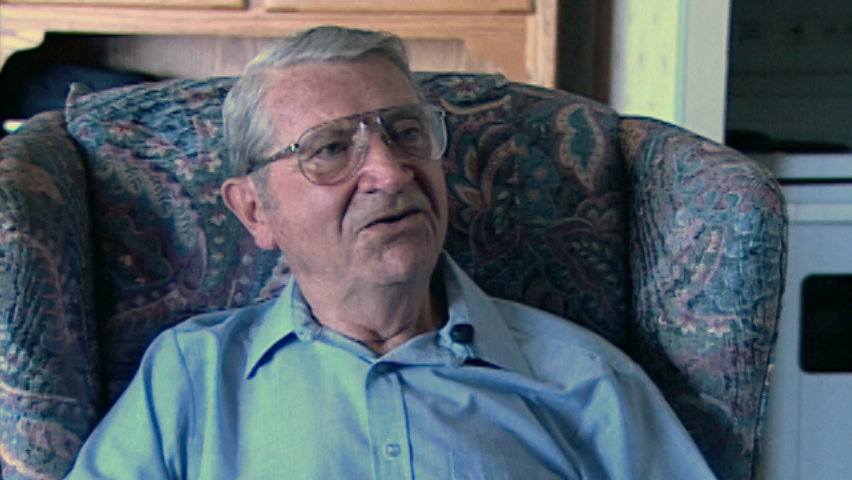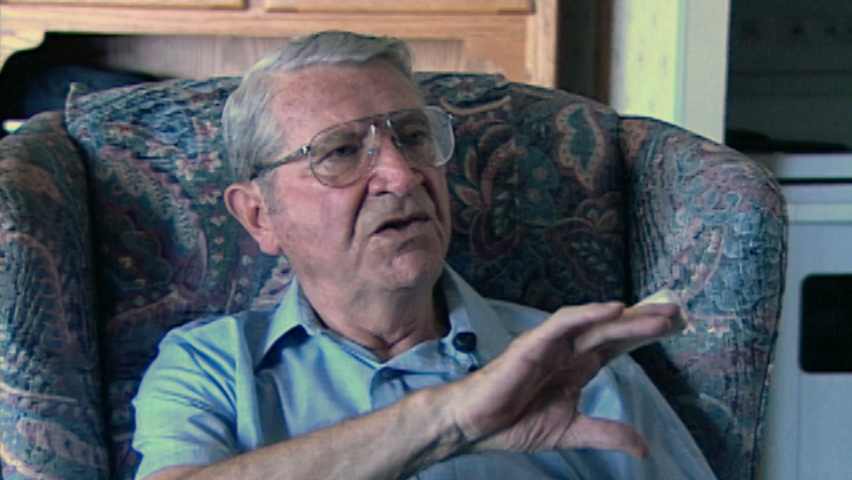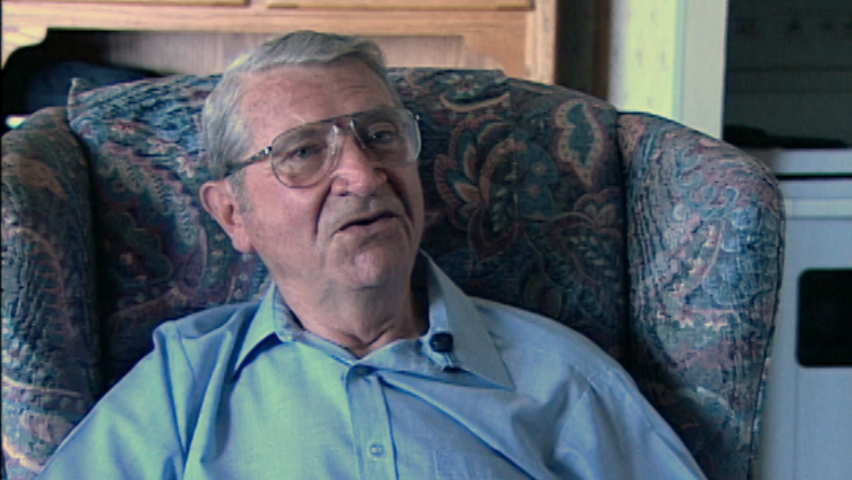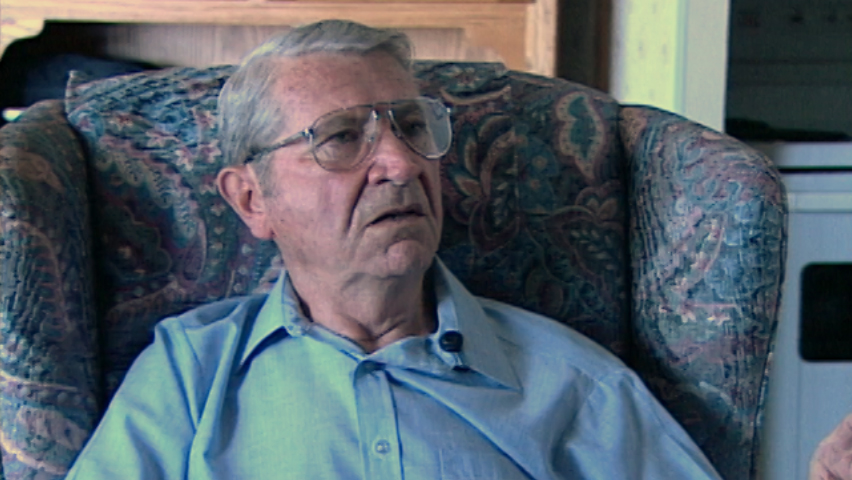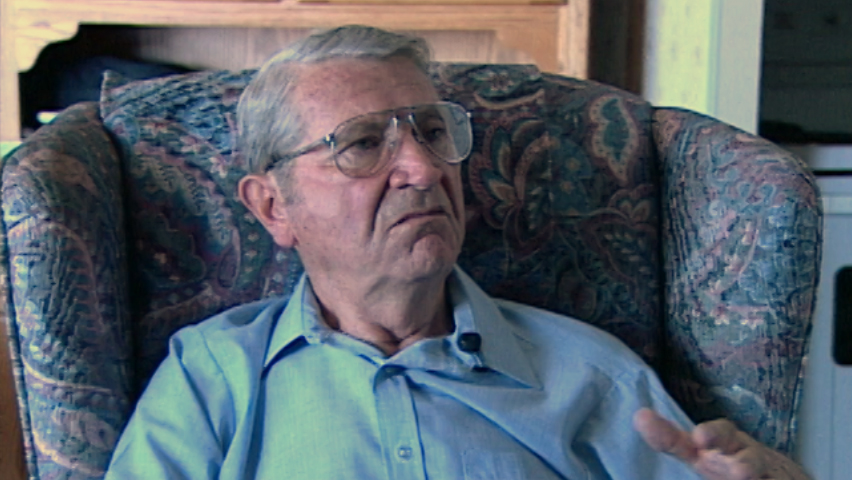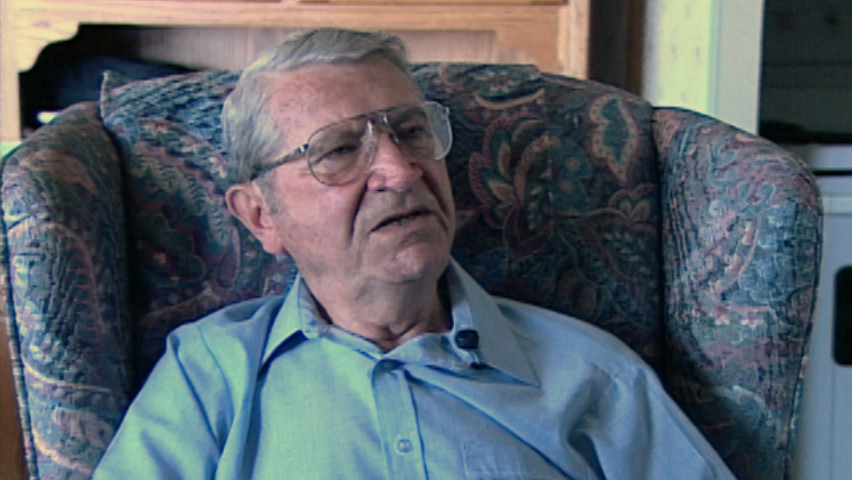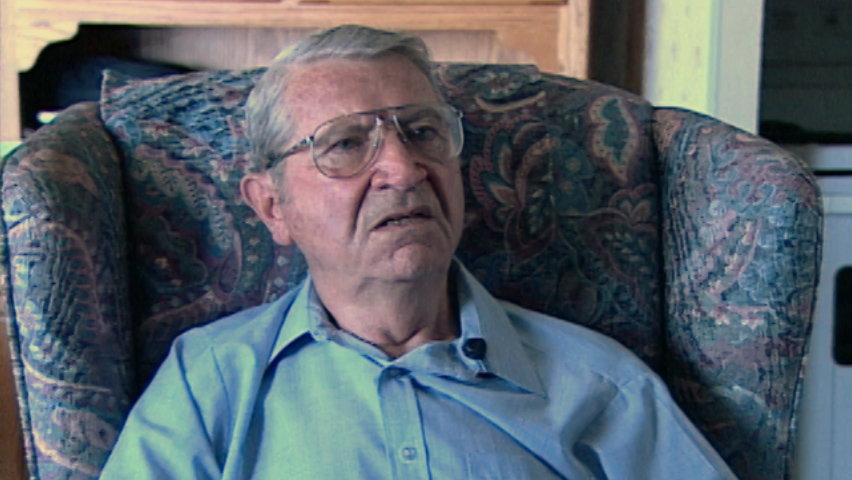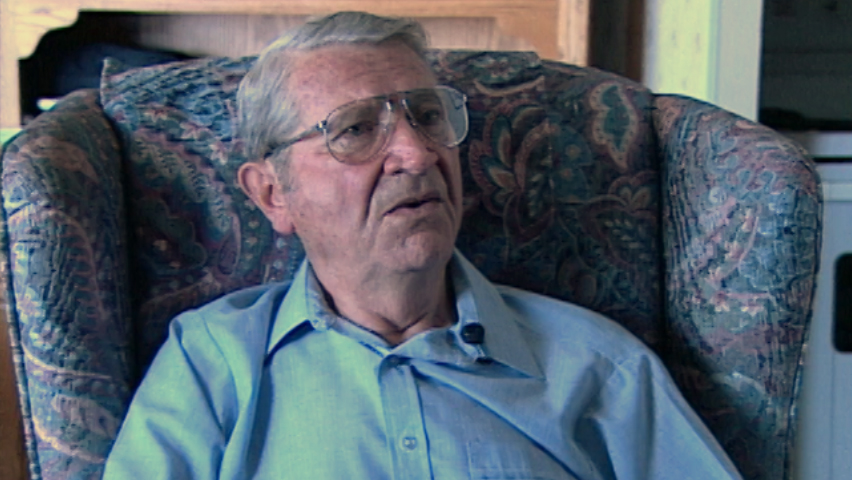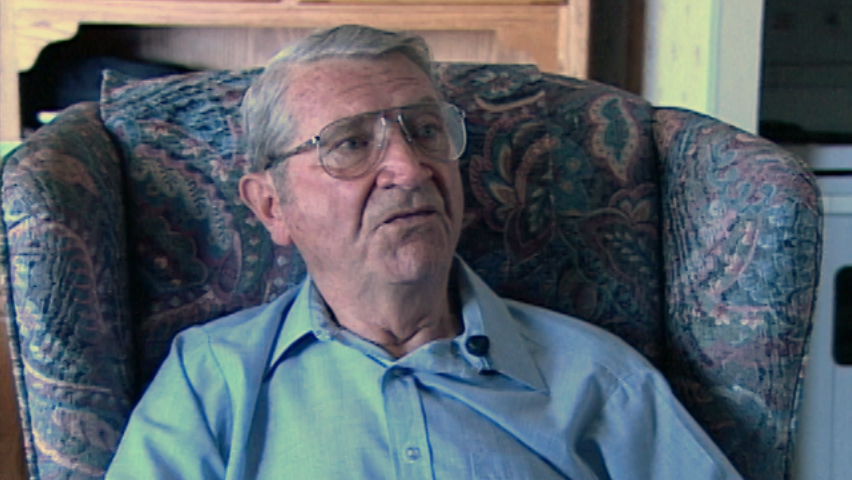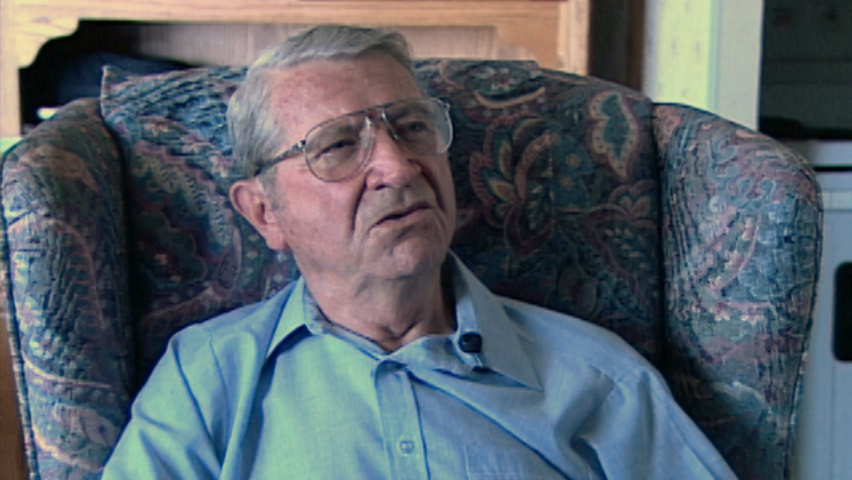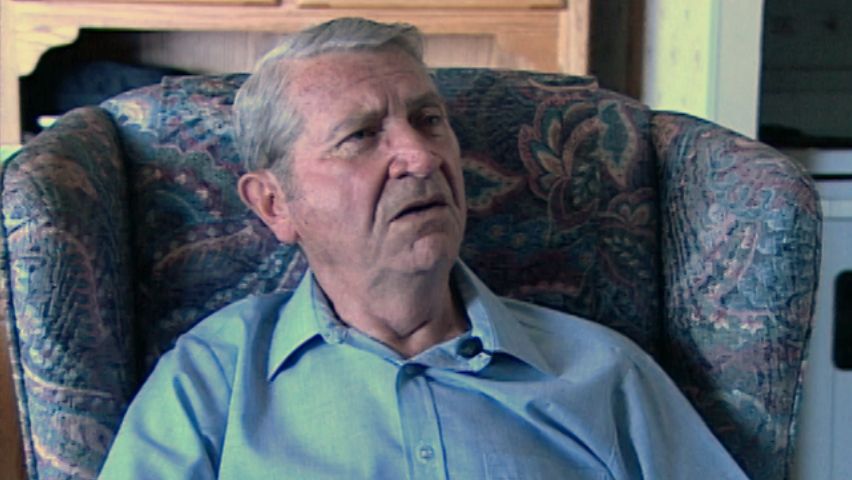Converting a Tank Into a Flame Thrower
Heroes Remember
Converting a Tank Into a Flame Thrower
Transcript
Description
Mr. Champoux describes how the allies transformed what he considered to be a useless tank (the Churchill) into an efficient flame thrower and shape charge delivery system. The flame thrower was used to penetrate German Pill Boxes that were firing on Dover from Calais.
Robert Arthur Champoux
Mr. Champoux was born in Hull, Québec on March 21st, 1921. He lived there until the age of 8 when his father, a First World War Veteran, moved the family to Ottawa. Mr. Champoux had three brothers and four sisters; he was the third oldest child. When the war broke out he was attending Ottawa Technical High School. He left school, after his first year, to join the Army after failing to join the Navy and the Air Force (who were not yet recruiting). He left for Europe July 17th, 1940 and ended up stopping in Iceland where he remained for the next 10 months. Mr. Champoux’s wartime service saw him fighting on D-Day and in the Falaise Gap. He also fought in Calais and later on in Holland where he was wounded. Mr. Champoux got a job with the Mint upon returning to Canada. He joined the army again in 1948 retiring in 1965.
Meta Data
- Medium:
- Video
- Owner:
- Veterans Affairs Canada
- Duration:
- 03:04
- Person Interviewed:
- Robert Arthur Champoux
- War, Conflict or Mission:
- Second World War
- Location/Theatre:
- Europe
- Battle/Campaign:
- Calais
- Branch:
- Army
- Units/Ship:
- 13 Platoon - Cameron Highlanders of Ottawa
- Occupation:
- Machine Gunner
Related Videos
- Date modified:



